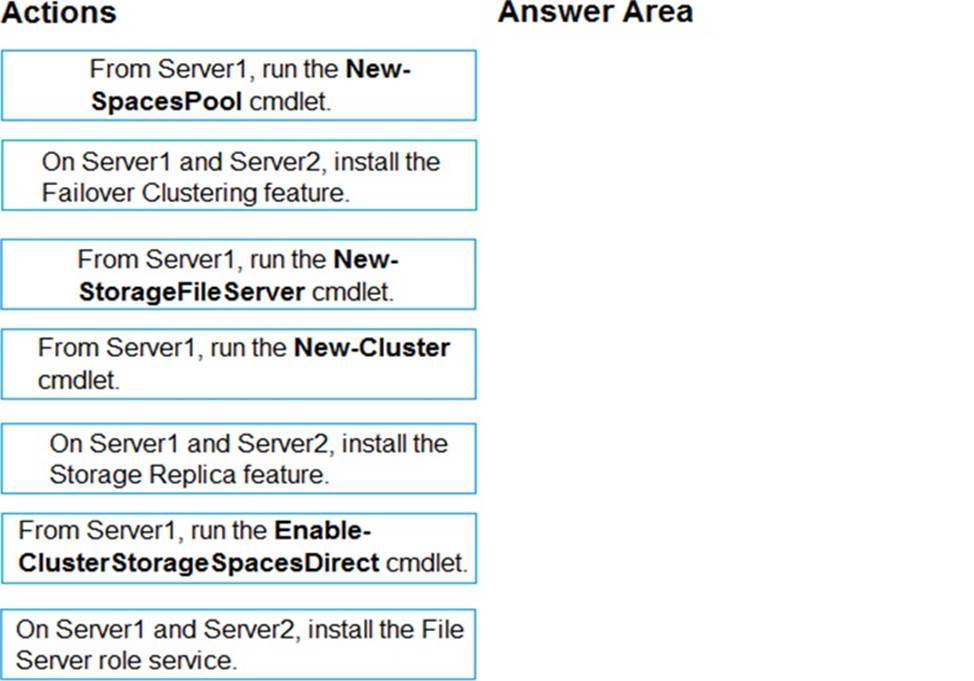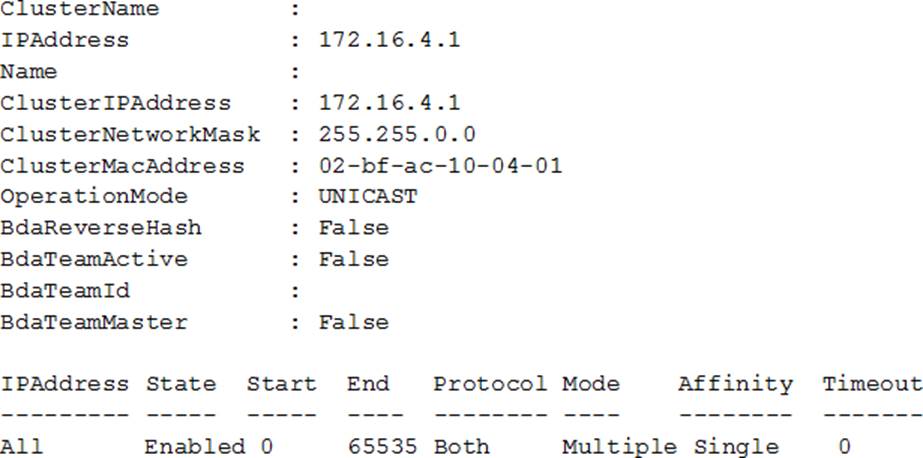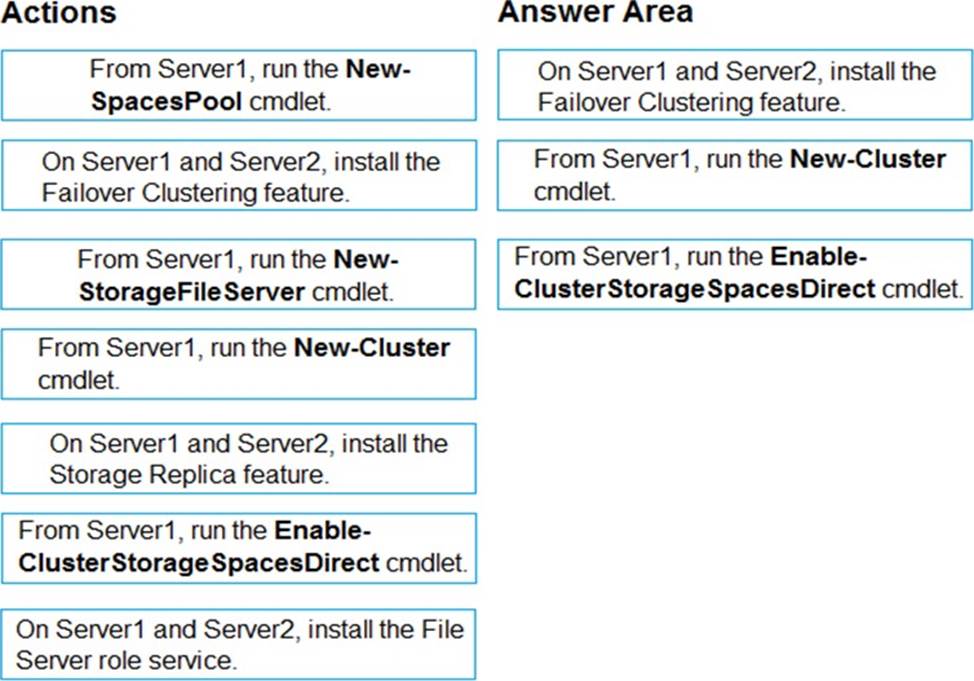Microsoft 70-740 Installation, Storage, and Compute with Windows Server 2016 Online Training
Microsoft 70-740 Online Training
The questions for 70-740 were last updated at Nov 26,2024.
- Exam Code: 70-740
- Exam Name: Installation, Storage, and Compute with Windows Server 2016
- Certification Provider: Microsoft
- Latest update: Nov 26,2024
You have a Hyper-V host named Server1 that runs Windows Server 2016. Server1 hosts a virtual machine named VM1 that runs Windows Server 2012. VM1 has the following configuration.

You discover that when you back up Server1, VM1 temporarily pauses.
You need to ensure that you can back up Server1 without causing downtime on VM1.
What should you do?
- A . Increase the memory on VM1
- B . Connect the hard disk drive of VM1 to an SCSI controller
- C . Update the virtual machine version of VM1
- D . Upgrade VM1 to Windows Server 2016
- E . Enable the VSS integration service on VM1
You have a server named Server1 that runs Windows Server 2016. Windows Defender is enabled on Server1.
Server1 runs an application named App1 that stores various types of files in Microsoft OneDrive for Business, MicrosoftOneDrive, and Microsoft SharePoint Online. App1 also interacts with several local services.
You need to prevent Windows Defender from scanning any files opened by App1.
What should you do on Server1?
- A . Run the Set-ExecutionPolicy cmdlet.
- B . Run the New-AppLockerPolicy cmdlet.
- C . Modify the real-time protection settings in Windows Defender.
- D . Run the Add-MpPreference cmdlet.
DRAG DROP
Your network contains an Active Directory domain named contoso.com. The domain contains two servers named Server1 and Server2 that run Windows Server 2016. Server1 and Server2 have multiple local disks attached.
You need to create a storage pool by using Storage Spaces Direct.
Which three actions should you perform in sequence? To answer, move the appropriate actions from the list of actions to the answer area and arrange them in the correct order.

You have a Network Load Balancing (NLB) cluster that contains two nodes named Server1 and Server2. The nodes run Windows Server 2016.
The NLB cluster has the following configuration.

You deploy the Web Server (IIS) server role identically to both servers.
You need to configure NLB to load balance requests between the web servers. HTTP requests must be stateless. HTTPS requests must be stateful.
What should you do? Each correct answer presents part of the solution.
- A . Modify the Cluster operation mode.
- B . Suspend the cluster.
- C . Drainstop the cluster.
- D . Add a new port rule.
- E . Edit the existing port rule.
HOTSPOT
You have a server named VM1. VM1 is a virtual machine on a Hyper-V host that runs Windows Server 2016. You need to create a checkpoint that includes the virtual machine memory state of VM1.
What command should you run? To answer, select the appropriate options in the answer area.

You have a server that runs Windows Server 2016 Standard.
You create a new three-way mirror storage space. You format the storage space by using ReFS.
Which two features can you use on the new storage space? Each correct answer presents a complete solution.
- A . file and folder permissions
- B . disk quotas
- C . Encrypting File System (EFS)
- D . long file names
- E . Data Deduplication
You have four servers named Server1, Server2, Server3, and Server4 that run Windows Server 2016. Server1 and Server2 have the Hyper-V server role installed. Server1 hosts a virtual machine named VM1. Server2 hosts a virtual machine named VM2. Server3 hosts the disks and the configurations of both virtual machines on an SMB share named VMShare.
You use Server4 to manage Hyper-V operations on Server1 and Server2.
From Server4, you attempt to perform a live migration of VM1 and VM2, but you receive the following error message: “No credentials are available in the security package”.
You need to ensure that you can perform the live migration of VM1 and VM2 between Server1 and Server2 while signed in to Server4.
What should you do?
- A . From Active Directory Users and Computers, modify the properties of Server4. Configure the delegation settings to trust the computer for delegation of cifs.
- B . From Windows PowerShell on Server3, run the remove-SMBMultiChannelConstraint cmdlet, and then assign Server4 Full Control permissions to VMShare.
- C . From Active Directory Users and Computers, modify the properties of Server1 and Server2. Configure the Delegation settings to trust the computers for delegation of the Microsoft Virtual System Migration Service.
- D . From Active Directory Users and Computers, modify the properties of your user account. Modify the Account is sensitive and cannot be delegated setting.
Note: This question is part of a series of questions that present the same scenario. Each question in the series contains a unique solution that might meet the stated goals. Some question sets might have more than one correct solution, while others might not have a correct solution.
After you answer a question in this section, you will NOT be able to return to it. As a result, these
questions will not appear in the review screen. You have a server named Server1 that runs Windows Server 2016. Server1 has the Hyper-V server role and Docker installed.
You pull the Microsoft/iis Docker image to Server1. You need to view the available space in the Microsoft/iis Docker image.
Solution: You run the command docker run Cd Microsoft/iis. You open Disk Management on Server1.
Does this meet the goal?
- A . Yes
- B . No
Note: This question is part of a series of questions that present the same scenario. Each question in the series contains a unique solution that might meet the stated goals. Some question sets might have more than one correct solution, while others might not have a correct solution.
After you answer a question in this section, you will NOT be able to return to it. As a result, these questions will not appear in the review screen.
You have two servers that run Windows Server 2016. You have a server named Server1 that runs Windows Server 2016. Server1 has the Hyper-V server role and Docker installed.
You pull the Microsoft/iis Docker image to Server1. You need to view the available space in the Microsoft/iis Docker image.
Solution: You run the following commands. docker run Cname container1 Cisolation hyperv Cd Microsoft/iis
docker exec Ci container1 cmd.exe dir Does this meet the goal?
- A . Yes
- B . No
Note: This question is part of a series of questions that present the same scenario. Each question in the series contains a unique solution that might meet the stated goals. Some question sets might have more than one correct solution, while others might not have a correct solution.
After you answer a question in this section, you will NOT be able to return to it. As a result, these questions will not appear in the review screen.
You have two servers that run Windows Server 2016. You have a server named Server1 that runs Windows Server 2016. Server1 has the Hyper-V server role and Docker installed.
You pull the Microsoft/iis Docker image to Server1. You need to view the available space in the Microsoft/iis Docker image.
Solution: You run the following commands. docker run Cname container1 Cd Microsoft/iis
docker exec Ci container1 cmd.exe dir Does this meet the goal?
- A . Yes
- B . No
Latest 70-740 Dumps Valid Version with 334 Q&As
Latest And Valid Q&A | Instant Download | Once Fail, Full Refund



